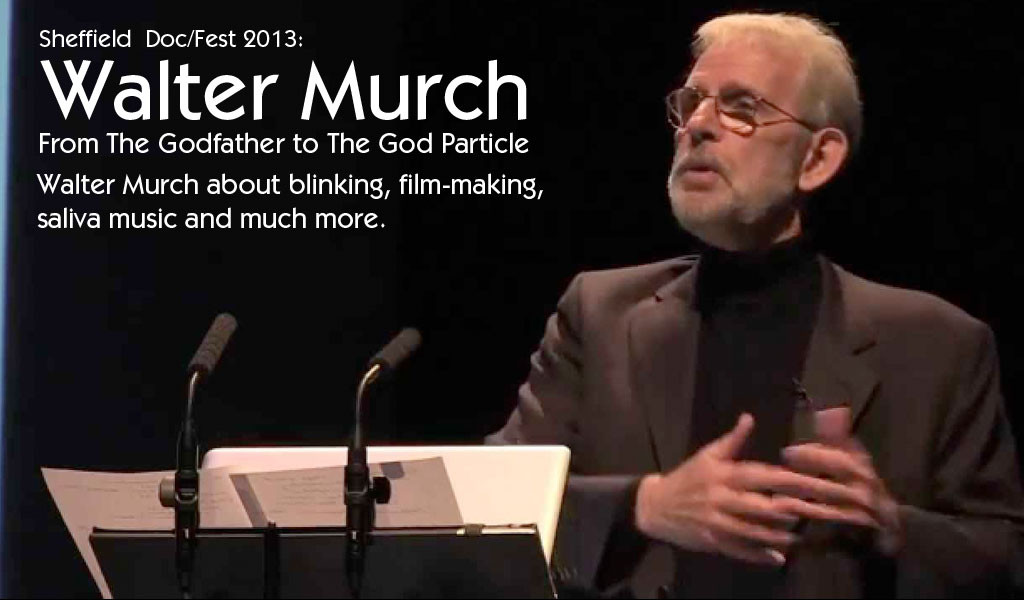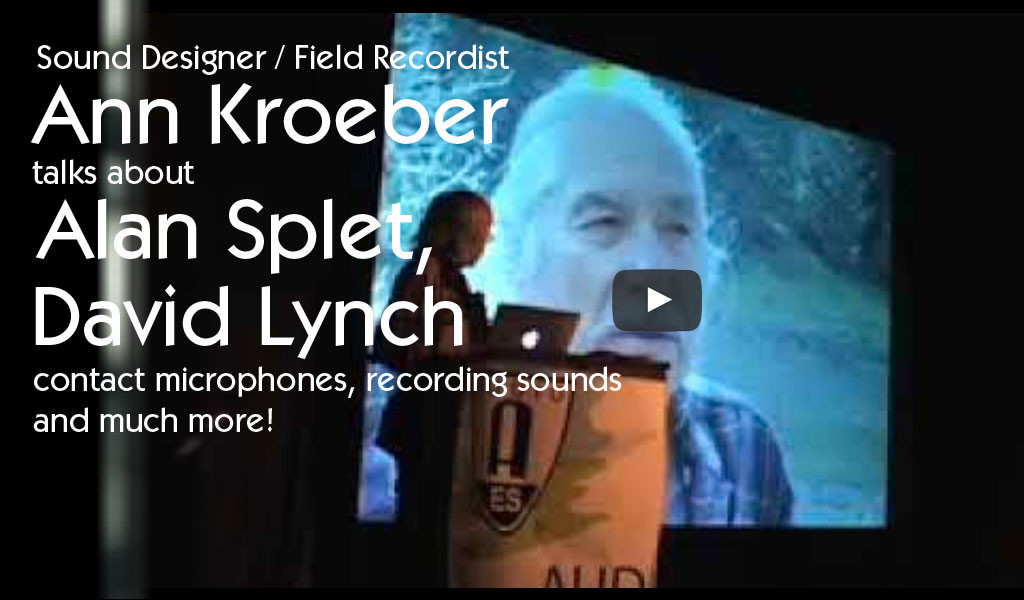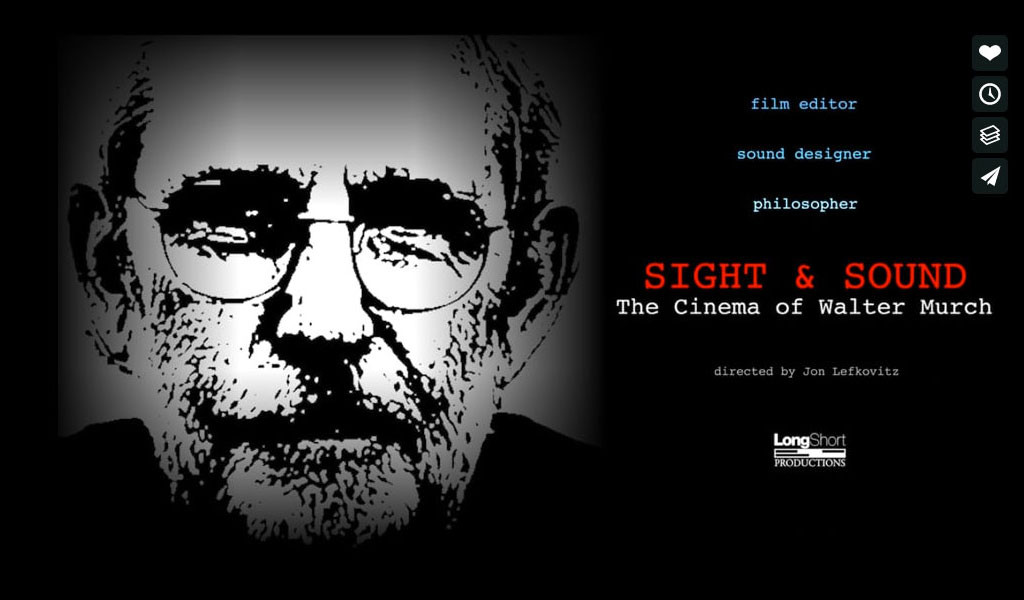In this presentation, sound designer Frank Kruse talks about his work as a sound designer and sound editor. He uses examples from the films Cloud Atlas and Rush.
Frank Kruse - about screenplays
The work method depends on the director, of course. When I work with Tom Tykwer, for example, I will receive a script early on, quite often while it's still being written.
Tom is one of the few directors who assembles a team early on in the process. So you're quite involved in the process from the start.
Frank Kruse - about the process of film sound editing
Usually you won't get a call until the film is well under way. This means the clock is ticking right away and you will have to work like crazy to meet the demands of the schedule.
Frank Kruse - about the term 'sound design'
Many people do not understand the meaning of the term 'sound design': they think all you need to do is sync up the sound and underscore what happens in the picture. You can, of course, do this but it is not what defines a sound editor's or sound designer's work.
Film is always about telling stories and supporting the plot. You can, therefore, drop the occasional line of dialogue because you don't need to verbalise everything that happens on screen. Otherwise it feels like a filmed stage play. But for me, film is very different from theatre. I will always aim to maximise the potential of each channel of the medium.
Frank explains that the Supervising Sound Editor is the connecting link between the sound team, the director, producer(s), picture editor(s), composer, and other collaborators in the film production chain. He collects and re-directs the suggestions from various departments and distributes them to other members of the sound team.
A minimal sound editing crew would consist of a single dialogue editor and a foley editor (i.e. someone who will process and edit the recordings from the foley artists), as well as a sound effects editor.
Sometimes a team consists of only two people; in documentary filmmaking, the sound team might just be one person. It all depends on the circumstances.
Embedding audio post-production during pre-production
Frank Kruse - about the process of sound editing for film
It is also important not to lose sight of the 'bigger picture'. If you are busy editing footsteps and movements all day long, you occasionally need someone to tell you that your ideas are great but might not work within the context of the entire film for a number of reasons.
The communication and cooperation between director and picture editor is absolutely key for the sound editing to work. There needs to be a constant exchange of ideas.
Frank Kruse - about the process of sound editing for film
The widely held notion of the sound designer working inside his/her own bubble is one of the reasons why films rarely progress and instead stagnate at a certain level.
So far Frank has been very lucky to collaborate with great picture editors who welcomed suggestions from the sound team. Seeing eye to eye helps generate ideas and suggestions, which ultimately lead to a better film.
Frank Kruse - about embedding post-production in pre-production
As I am generally already on board with Tom Tykwer during pre-production, I can point out certain specialties about the script or the prep to the production sound mixer. I can make sure that the sound mixer will get enough time to record certain things. So it's important that directors have this at the back of their minds before shooting begins. If you wait until the shoot starts, you will be lost; the high stress levels and the time pressure make it impossible to organise anything during that period. Planning is everything!
Frank Kruse - about embedding post-production in pre-production
If it is not possible for the production sound mixer to make additional recordings, I will drive out to the set and record those things separately.
Frank Kruse - about embedding post-production in pre-production
I find it a very pleasant way of working when there are no images available yet and you can imagine the sounds of the film purely on the basis of the script.
For Cloud Atlas, Frank was able to think about the atmospheres in the film one month prior to the end of principal photography. This approach often yields fantastic ideas because they are not tied to any pre-existing images.
Frank Kruse - about embedding post-production in pre-production
You will never get the same freedom again of being able to think about the sound before the first edited version of the film arrives. Because as soon as it does, the time pressure becomes immense, and each scene has to be a precision landing, so to speak.
Finding a common language to talk about sound.
At 13:30, Frank mentions a very important topic. Many non-audio people struggle to find the right words when describing sounds or noises. This is particularly true if a director has difficulties expressing his/her ideas in regard to the sound, in which case a common language needs to be found.
To find that common language when working together with a director for the first time, Frank begins by working out a suggestion for a scene. This suggestion might be deliberately provocative and exaggerated in order to evoke a reaction from the director. Based on the suggestion and the director's reaction to it, a general plan of action might be established. Even if the suggestion is a complete miss, it will still help find the right direction for the film and for the collaboration with its director.
Frank Kruse about music vs. sound
Creating an audio track is very similar to composing music. Hence the title of Frank's presentation: the orchestration of sounds.
When mixing music and sound for a film, you have to decide which element is most important for the story. In other words: which element of the soundtrack helps best explain or underscore the narrative. In order for one element to be more prominent on the audio track, the other element has to be lowered in volume or even eliminated.
Again, this is where team work comes into play. When music and sound overlap, the music might have to be altered because the sound has to be in sync with the picture and hence cannot be moved. If the music is more important for the narrative, other sounds should be 'backgrounded' or even eliminated.
Frank Kruse about the film Rush
Ron Howard said he wanted to make this film for Formula 1 racing fans as well. Even hardcore fans should be able to recognise that the sound of the racing cars is authentic.
As all racing scenes were shot MOS, i.e. without sound, the audio tracks had to be created entirely in post-production. As mentioned above, Frank stresses the importance of the production sound mixer's contribution to the success of a film. The vintage racing cars were only available once for the recordings, as they needed extensive maintenance after each race. Luckily, the production sound mixer was a big Formula 1 racing fan and managed to make some truly beautiful recordings of the cars.
Frank Kruse - about creating the car racing sounds in Rush
Formula 1 cars do not produce a great number of interesting sounds, which makes them a bit one-dimensional. This realisation led the sound team to the conclusion that the story could not be told through the engines. Even when the cars sped up, their engines sounded relatively monotonous.
The challenge, then, was to make these cars come alive somehow. It's one thing to stand next to the race track with your trouser legs fluttering in the breeze——but in a movie theatre these extreme sound levels cannot be reproduced.
The goal, therefore, was to replicate the subjective experience of a race for the film's soundtrack.
Frank demonstrates this with the film clip at 32:00.
At 34:50, Frank shows us another nice example of how he solved a sound problem: at the start of the race scene, a racing car with a running engine is in the foreground. The racing car's engine keeps revving rather noisily but the focus of the scene is actually on a man behind the vehicle. The exhaust emitted by the car helps visualise the revving engine; notice how the sounds of the car are placed in the pauses between dialogues. The clouds of exhaust are deliberately placed to underscore the revving noise and, therefore, the scene's realism.
At 43:00, Frank plays a clip from the final race in the film. Frank first plays a clip from the complete sequence including all audio tracks; at 46:20, he plays only the effects track. This is an impressive demonstration of just how many special sounds are used in this sequence.
All of these sounds bring across the insanity of racing such high-powered vehicles in the rain.
These special sounds are barely noticeable in combination with all the other audio tracks. In other words, they blend in naturalistically. Although these sounds and noises don't occur in real life, they nevertheless help bring across the physical experience of the race.
Frank Kruse about Cloud Atlas
Frank Kruse about Cloud Atlas
Tom Tykwer hates to use layout sounds. That's why we were working with the final product from the beginning. It was absolutely essential for me to be part of the project right from the beginning.
In order to work like this and to communicate more easily, Frank moved his edit suite into the same building as the picture editor and the director. This facilitated communication between all involved parties.
Frank Kruse about communication
Even lengthy Skype conference calls and meetings rarely yield the sort of information you really need; nothing beats a three-second conversation in the kitchenette.
Merging the offices gave me the advantage of being able to have off-the-cuff conversations with Tom whenever he was in the hallway; these micro-meetings gave me better information and feedback than on any other production.
Frank's office was right next to that of picture editor Alex Berner. This facilitated communication between the two departments, as there was simply no other way to create the many transitions and transformations in the movie.
Frank Kruse about communication
Merging offices also brought the added benefit of working very closely with picture editor Alex Berner. We sat together in the evenings and loaded new sounds into the Avid and watched the film together. This triggered many ideas we would not have otherwise had.
The interlinking of the story with the various time periods and transitions was an important aspect his work on Cloud Atlas. At 1:32:00, Frank shows a clip that transports viewers rhythmically through three different time periods. The horse's hooves turn into a the rhythm of a train, before the scene flashes back to the young man who used to ride the steam train on the same stretch.


